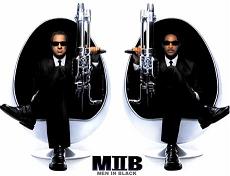Seoul, A number of robot guards that can detect and kill the enemy deployed in South Korea along the border with North Korea are heavily guarded, as officials said on Tuesday (13 / 7). “Our military has been testing the robots along the border,” said a defense ministry spokesman (Kemenhan), as quoted by AFP. South Korean robot used is a combination of two robots that have the ability to investigate, track, shoot and recognize the sound system integrated into a single unit, he said, declining to give further details.
Robot that per-unit costs 400 million won (330,000 dollars) was installed last month at a checkpoint in the middle of the Military Free Zone, which divides the peninsula, Yonhap news agency said. A military officer who was not quoted by name said the ministry would deploy robots guards along the front lines of the Cold War world and then, if the test was successful. Robot using motion and heat detection devices to sense a possible threat, and alert the command center, said Yonhap.
If the command center operator can not identify the possibility of an intruder through audio or video communication system of robots, operators can be ordered to fire a weapon or a 40mm automatic grenade launcher. Carousel is now also developing advanced combat robots armed with weapons and sensors that can complement the soldiers on the battlefield. Carousel has a conscript army with a strength of 655 000 compared to the Pyongyang army which reached 1.2 million. Meanwhile, there are estimates, declining birth rate means Seoul in the future will strive to maintain the number of troops.(AFP)
A number of robot guards that can detect and kill the enemy deployed in South Korea (ROK) along the border with North Korea (North Korea) are heavily guarded, as officials said on Tuesday (13 / 7).
“Our military has been testing the robots along the border,” said a defense ministry spokesman (Kemenhan), as quoted by AFP.
South Korean robot used is a combination of two robots that have the ability to investigate, track, shoot and recognize the sound system integrated into a single unit, he said, declining to give further details.
Robot that per-unit costs 400 million won (330,000 dollars) was installed last month at a checkpoint in the middle of the Military Free Zone, which divides the peninsula, Yonhap news agency said.
A military officer who was not quoted by name said the ministry would deploy robots guards along the front lines of the Cold War world and then, if the test was successful.
Robot using motion and heat detection devices to sense a possible threat, and alert the command center, said Yonhap.
If the command center operator can not identify the possibility of an intruder through audio or video communication system of robots, operators can be ordered to fire a weapon or a 40mm automatic grenade launcher.
Carousel is now also developing advanced combat robots armed with weapons and sensors that can complement the soldiers on the battlefield.
Carousel has a conscript army with a strength of 655 000 compared to the Pyongyang army which reached 1.2 million.
Meanwhile, there are estimates, declining birth rate means Seoul in the future will strive to maintain the number of troops.





